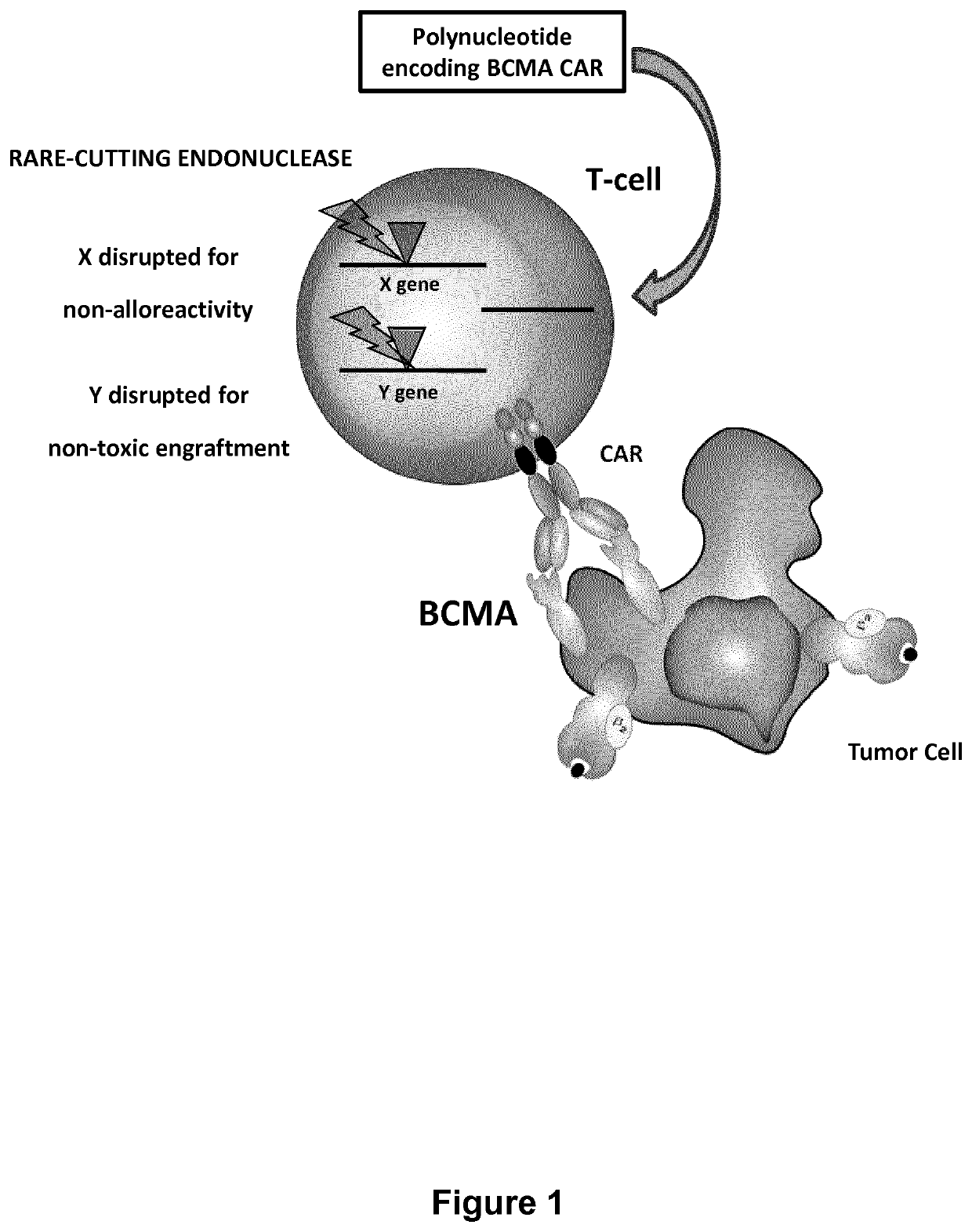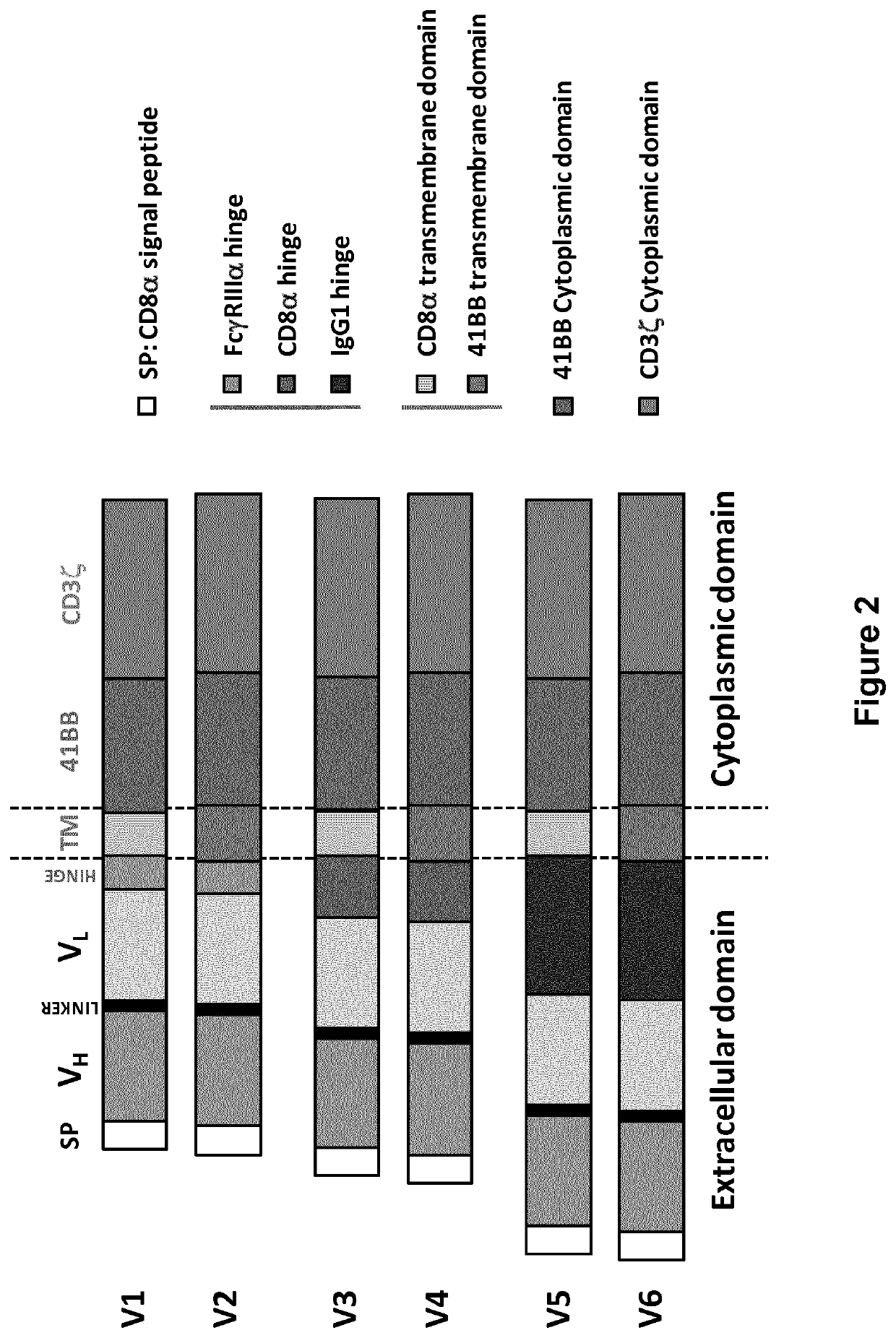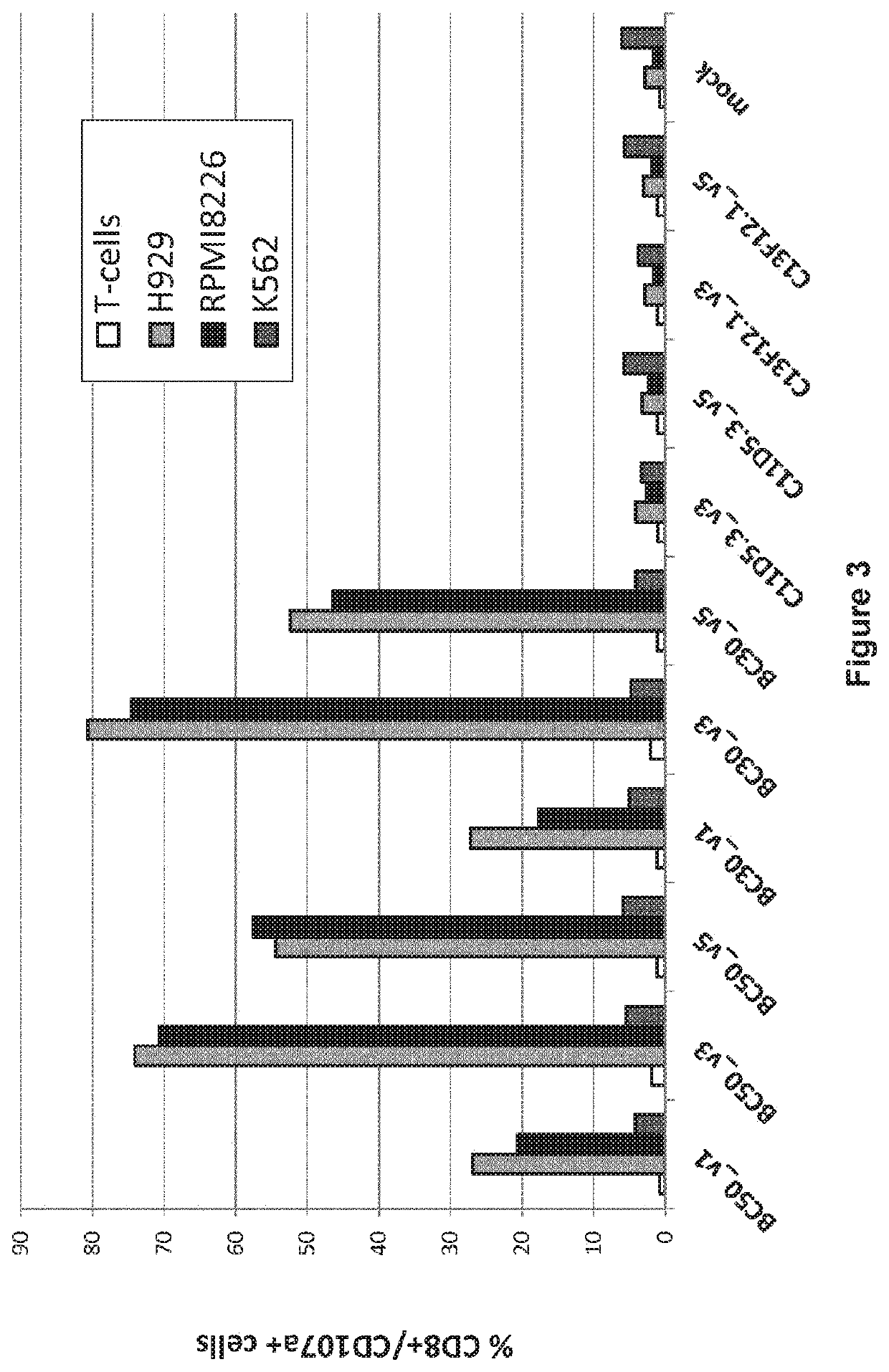Bcma (CD269) specific chimeric antigen receptors for cancer immunotherapy
a chimeric antigen receptor and immunotherapy technology, applied in the field of chimeric antigen receptors, can solve the problems of inability to provide prolonged expansion and anti-tumor activity in vivo, high toxicity of this approach, and inability to expand to any antigen, etc., to achieve increased selectivity in vitro and increase cytolytic activity
- Summary
- Abstract
- Description
- Claims
- Application Information
AI Technical Summary
Benefits of technology
Problems solved by technology
Method used
Image
Examples
example 1
Preparation of TCR KO T Cells
Proliferation of TCRalpha Inactivated Cells Expressing a BCMA-CAR.
[0498]Heterodimeric TALE-nuclease targeting two 17-bp long sequences (called half targets) separated by an 15-bp spacer within T-cell receptor alpha constant chain region (TRAC) gene were designed and produced. Each half target is recognized by repeats of the half TALE-nucleases listed in Table 10.
TABLE 10TAL-nucleases targeting TCRalpha geneTargetHalf TALE-TargetsequenceRepeat sequencenucleaseTRAC_T01TTGTCCCACAGATRepeat TRAC_T01-TRAC_T01-LATCCAgaaccctgLTALENaccctgCCGTGTA(SEQ ID NO: 44)(SEQ IDCCAGCTGAGANO: 46)(SEQ ID NO:43)Repeat TRAC_T01-TRAC_T01-RRTALEN(SEQ ID NO: 45)(SEQ IDNO: 47)
Each TALE-nuclease construct was subcloned using restriction enzyme digestion in a mammalian expression vector under the control of the T7 promoter. mRNA encoding TALE-nuclease cleaving TRAC genomic sequence were synthesized from plasmid carrying the coding sequence downstream from the T7 promoter.
[0499]Purifie...
example 2
Screening of BCMA CARs According to the Invention
[0502]4 different scFv's from C11D5.3, C13F12.1, BC30 and BC50 antibody were constructed and used to generate Chimeric Antigen Receptors (CARs) and screen for their degranulation activity towards BCMA+ cells.[0503]Different architectures of each CAR were designed (namely V1, V3 and V5) and their activity was determined upon transient expression in human primary T-cells.
[0504]Primary T-Cell Cultures[0505]T cells were purified from Buffy coat samples provided by EFS (Etablissement Français du Sang, Paris, France) using Ficoll gradient density medium (Ficoll Paque PLUS / GE Healthcare Life Sciences). The PBMC layer was recovered and T cells were purified using a commercially available T-cell enrichment kit (Stem Cell Technologies). Purified T cells were activated in X-Vivo™-15 medium (Lonza) supplemented with 20 ng / mL Human IL-2 (Miltenyi Biotech), 5% Human Serum (Sera Laboratories), and Dynabeads Human T activator CD3 / CD28 at a bead:cell ...
example 3
Activity of BCMA CAR Expressing T Cells Towards BCMA Expressing Cancer Cells
[0514]Among all the CAR molecules generated, 6 active molecules were selected for further activity tests.[0515]For this, T-cells were isolated from buffy-coat samples and activated using CD3 / CD28 beads as described above. Cells were transiently transfected with mRNAs encoding the different candidates at D11 after activation. CAR activity was assessed by measuring their degranulation capacity, the IFNgamma release, and the cytotoxic activity when co-cultured with cells expressing or not BCMA.[0516]FIG. 4 shows the degranulation activity (CD107a+ cells) of CAR T-cells after 6 h co-cultures with BCMA neg cells (K562) or cells expressing BCMA (RPM18226 and NCI-H929). Co-cultures were started 24 h after CAR mRNA electroporation. The results represent the mean values of three independent experiments.[0517]The results in FIG. 4 confirmed the degranulation activity of BC30 and BC50 derived CARs expressed in T cells....
PUM
 Login to View More
Login to View More Abstract
Description
Claims
Application Information
 Login to View More
Login to View More - R&D
- Intellectual Property
- Life Sciences
- Materials
- Tech Scout
- Unparalleled Data Quality
- Higher Quality Content
- 60% Fewer Hallucinations
Browse by: Latest US Patents, China's latest patents, Technical Efficacy Thesaurus, Application Domain, Technology Topic, Popular Technical Reports.
© 2025 PatSnap. All rights reserved.Legal|Privacy policy|Modern Slavery Act Transparency Statement|Sitemap|About US| Contact US: help@patsnap.com



